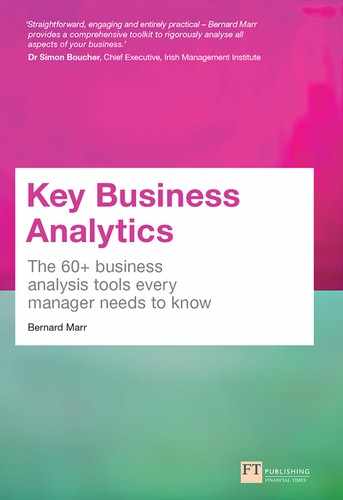57
Employee performance analytics
What is it?
Employee performance analytics seeks to assess individual employee performance. The resulting insights can identify who is performing well and who may need some additional training or support in order to lift their game.
Plus, an understanding of employee performance can also feed into the recruitment process so more of the right types of employees are recruited and the costly mistakes are avoided.
Why does it matter?
Employee performance analytics matters because your business needs capable high-performing employees to survive and thrive. Great companies need great people.
Unless you measure performance it can easily get lost in the day-to-day operations of the business. A poor employee can effectively be carried by a productive one, which will eventually irritate the productive employee. Your job is to know who is doing what and who needs support so that you can provide that support and lift performance across the board.
If you are seeking growth and improved profitability you need to develop and motivate your employees in order to maintain the skill level required and to ensure you keep your talented employees. Employee productivity analytics can help you do that.
When do I use it?
Most companies assess employee performance annually, this is not enough. Traditionally, line managers would conduct performance review interviews (Chapter 22) to assess an employee’s performance based on some data.
In order to be effective, performance should be assessed on a regular and less formal basis and modern data collection methods allow us to collect data from many different sources to aid in the assessment.
If done well, performance analytics provide a positive experience that contributes to the overall employment and career development experience and helps to strengthen the relationship between line managers and their reports.
What business questions is it helping me to answer?
Employee performance analytics helps you answer business questions such as:
- How productive are my employees?
- Are there star performers and if so who are they?
- Are there employees who are struggling and if so who are they?
- Are there employees who are flourishing in certain tasks or who seem to outperform others in key areas?
- What are they doing differently that is making them so successful?
How do I use it?
By its nature, performance analytics is backward looking. It is assessing past performance and how an employee has performed throughout the previous year. As such it is not that useful for predicting future performance.
Today, we have many innovative ways of collecting and analysing performance, from crowd-sourced performance assessments to sensors. For example, Sociometric Solutions puts sensors into employee name badges that can detect social dynamics in the workplace. The sensors report on how employees move around the workplace, with whom they speak, and even the tone of voice they use when communicating.
One of the company’s clients, a major bank, noticed that its top-performing employees at call centres were those who took breaks together. They instituted group break policies and performance improved 23 per cent.
The data collected about employee performance can, however, be further analysed to provide additional insights. They can, for example, be recorded which can then be analysed using voice analysis (Chapter 12), or converted to text for text analysis (Chapter 8), or data mining (Chapter 6). Regression analysis (Chapter 7) is also useful here to help identify any patterns that you may not have been conscious of that can then improve ongoing performance and recruitment.
Practical example
Employee performance analytics can be particularly useful in industries that traditionally have a high staff turnover such as call centres. It is important to understand the different call lengths for each operative, how many calls they get through per hour, how many of their calls escalate into issues and how many end in resolution and a happy customer.
These and countless other data points also allow you to detect patterns and identify your star performers so that what they do can be replicated by others. These insights can also be used to fine tune customer processes, recruitment and training and development initiatives so that you get more great employees and fewer poor ones. Not only does that improve results but it can significantly reduce staff turnover and recruitment costs.
Tips and traps
Whenever you monitor performance of employees it is important to be aware of the fact that the monitoring itself will affect performance. Usually when people know that specific elements of their job are monitored they make sure they perform particularly well at them. This can skew their attention away from doing a good job to simply focusing on the things that are being monitored and analysed.
With modern data capture techniques such as video and sensor data, it is possible to analyse performance more holistically with less focus on specific parts of a job that might cause the employee to skew their behaviour.
In call centres, for example, overall performance improved when companies started to record all calls and then applied analytics and random ‘listen ins’ to evaluate performance, rather than simply being based on call volume and call duration stats.
Further reading and references
To understand more about employee performance analytics see for example:
- Kinley, N. and Ben-Hur, S. (2013) Talent Intelligence: What You Need to Know to Identify and Measure Talent, 1st edition, San Francisco, CA: Jossey-Bass
- Dearborn, J. (2015) Data Driven: How Performance Analytics Delivers Extraordinary Sales Results, 1st edition, Hoboken, NJ: Wiley
- http://www.ehow.com/about_6469908_employee-performance-analysis.html
- http://www.cioinsight.com/it-management/workplace/slideshows/improving-employee-performance-with-data-analysis-02
- http://smallbusiness.chron.com/conduct-statistical-analysis-job-performance-47731.html
- https://www.linkedin.com/pulse/20140701052815–64875646-beware-big-data-in-your-workplace
- https://hbr.org/2012/06/crowdsource-your-performance-r
